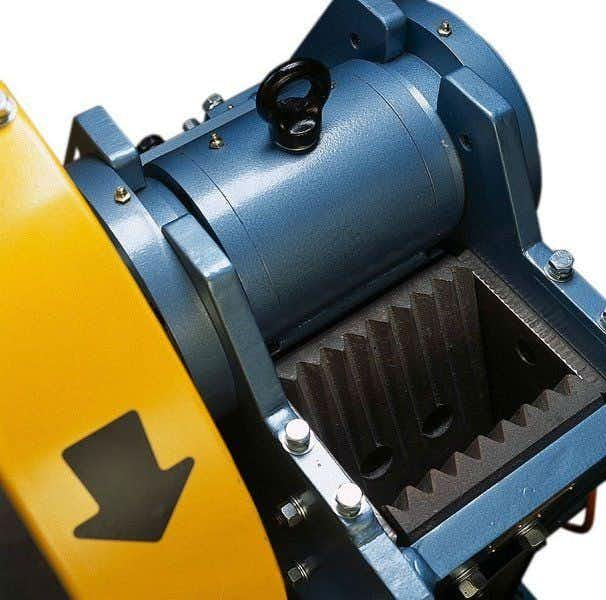This case involves a man who was a heavy equipment operator for an excavation company. The man was working at a gravel pit loading material into a hot asphalt plant feeder. As he was on his way to park his loader at the end of his shift, the man received a call to help another crew that was having problems with a jaw crusher. A large rock had become lodged in the jaw crusher. The toggle plate of the jaw crusher was supposed to break when uncrushable material passed through the crusher. The toggle plate did not break and did not act as a safety device. The crew tried to dislodge the rock with a backhoe tooth cut from another piece of equipment and attached to a chain. The tooth then became wedged into the lower end of the jaws along with the rock. When the man tried to remove the tooth, it shot up and struck him in the jaw. The man was left unconscious and his face and neck were seriously injured. The man suffered numerous injuries including extensive head trauma, facial fractures, fractured teeth, lip and facial lacerations, and posttraumatic stress disorder.
Question(s) For Expert Witness
1. What could cause the stored energy in a jaw crusher to violently release non-crushable material caught in the jaws of the crusher?
Expert Witness Response
Jaw crushers are used to crush different types of material, such as hard rocks, ore, building rubble, and glass. Jaw crushers have one fixed and one movable crushing jaw that supports the crushing plates. The crushing force of the machine is made by an eccentric shaft and is transferred to the crushing zone by a toggle plate system. If uncrushable material enters the crusher chamber, the toggle plate is supposed to break to prevent overstressing the crusher. The problem with the jaw crusher’s toggle plate in this case is that it should have broken when the ripper tooth got lodged in it. If this had happened, the break would have released the stored energy, so that the tooth could have been removed easily without any injury to the worker. If the toggle plate had broken as it was supposed to, the jaws of the crusher would have opened and the pressure on the jammed tooth would have been relieved. The toggle plate in this case probably was defective because its thickness may have exceeded manufacturing specifications. If the toggle plate in this case was too thick, this may have prevented it from breaking even though the tooth was lodged in the jaw and could not pass through the crusher. The jaw crusher should have been designed with a hydraulic system that provided overload protection. This type of system would have used hydraulic cylinders run by a remote control that would have crushed any material remaining in the jaws after an interruption and that provided more protection so that workers did not have to try to remove the non-crushable material manually. This type of system would have allowed the non-crushable material to go through the jaw crusher while the toggle plate would have been left intact. This type of design is helpful in preventing injuries to workers because it allows the jaw to open if there is excessive pressure caused by an overload.
About the author
Michael Morgenstern
Michael is Senior Vice President of Marketing at The Expert Institute. Michael oversees every aspect of The Expert Institute’s marketing strategy including SEO, PPC, marketing automation, email marketing, content development, analytics, and branding.



